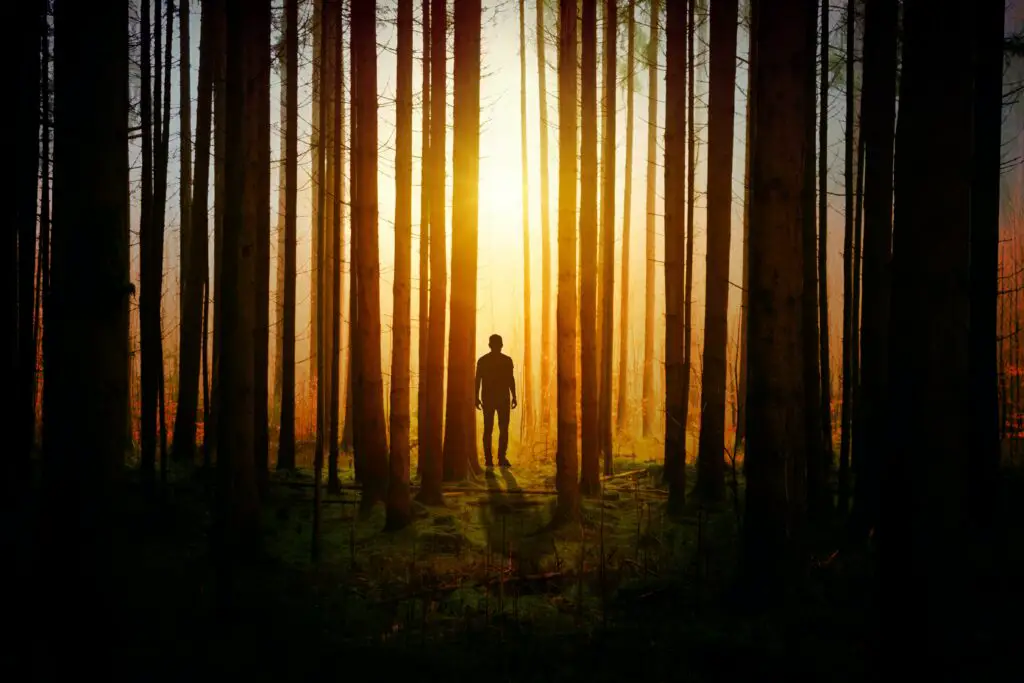Have you ever wondered what happens in the wilderness once the sun goes down? Let’s dive into the world of nocturnal hunters and discover how do wild animals hunt their prey after dark.
As the sun sets and darkness engulfs the land, the world becomes a different place. Nocturnal animals come to life, prowling the night in search of their next meal. How do they find their prey in the dark, you ask? It’s all about their unique adaptations, which we will explore in this article.
Night Vision Adaptations
Many nocturnal predators have specific adaptations to see better in the dark. Let’s examine three essential components:
Tapetum Lucidum
The tapetum lucidum is a reflective layer behind the retina that enhances night vision. It reflects light back onto the retina, increasing the amount of light available for the photoreceptors to detect. This is what causes animals’ eyes to glow in the dark.
Large Pupils and Retina
Large pupils allow more light to enter the eye, while a more extensive retina provides a larger surface area for capturing light. This combination significantly improves night vision.
Rod Cells
Nocturnal hunters have more rod cells in their retinas than diurnal animals. These cells are highly sensitive to light, enabling them to see even in low-light conditions.
Echolocation
Some animals, like bats and certain species of whales, use echolocation to navigate and hunt. They emit high-frequency sounds that bounce off objects, allowing them to detect the location, size, and shape of their prey.
Smell and Taste
Nocturnal predators often rely on their keen sense of smell to locate prey. Some species, such as snakes, even use their tongues to taste the air for chemical cues. These abilities enable them to track their prey, even when it is hidden or camouflaged.
Hearing Adaptations
Many nocturnal animals have evolved to have exceptional hearing abilities. Owls, for instance, have asymmetrical ears and facial disks that funnel sound, enabling them to pinpoint the exact location of their prey.

Camouflage and Stealth
Nocturnal predators often blend in with their surroundings by utilizing camouflage, making it easier for them to stalk their prey without being noticed. Additionally, they use stealthy movements to avoid detection.
Teamwork and Strategy
Some nocturnal hunters, like wolves and lions, work in packs or prides, using coordinated strategies to surround and capture their prey. These group hunting tactics increase their chances of success.
Speed and Agility
Predators like cheetahs and leopards rely on their remarkable speed and agility to chase down and catch their prey. Their muscular, streamlined bodies are designed for explosive bursts of speed and quick, precise movements.
Ambush Predators
Some nocturnal hunters, like crocodiles and some species of spiders, are ambush predators. They lie in wait for their prey, patiently waiting for the perfect moment to strike.
Electroreception
Certain aquatic predators, like sharks and electric rays, have developed electroreception, which allows them to sense the electrical fields produced by the movements of their prey. This helps them locate prey even in complete darkness.
Trap-building
Creatures such as spiders and some species of ants build elaborate traps to ensnare their prey. These traps, like webs or pits, help them catch food without expending too much energy.
The Role of Moonlight
Moonlight can have a significant impact on the hunting activities of nocturnal predators. Bright moonlit nights can make it easier for predators to spot their prey, while darker nights can provide better cover for stealthier hunters.
Challenges Faced by Nocturnal Predators
Despite their many adaptations, nocturnal predators still face numerous challenges. These include competition for resources, difficulty locating prey during adverse weather conditions, and the threat of human activities encroaching on their habitats.
Conservation of Nighttime Hunters
As we learn more about these incredible nocturnal hunters, it is essential to conserve their habitats and support efforts to protect these species. By understanding their unique adaptations and challenges, we can work together to ensure their survival for future generations.
Wrap-Up – How Do Wild Animals Hunt Their Prey After Dark?
In the darkness of the night, wild animals have evolved remarkable hunting adaptations to locate and capture their prey. These adaptations, ranging from enhanced vision and hearing to stealth, speed, and teamwork, demonstrate the fascinating diversity and ingenuity of nature’s nocturnal hunters.
Like this informative article? Read more of my interesting blogs here!
FAQs
What are some common adaptations that nocturnal predators have for hunting in the dark?
Some adaptations include enhanced night vision, echolocation, heightened sense of smell and taste, improved hearing, camouflage, and stealth.
How do owls locate their prey using their hearing?
Owls have asymmetrical ears and facial disks that help them pinpoint the exact location of their prey by funneling sound.
How does echolocation work?
Echolocation is used by animals like bats and whales, which emit high-frequency sounds that bounce off objects. The returning echoes provide information about the location, size, and shape of their prey.
Why is the moon’s brightness important to nocturnal predators? A4: The moon’s brightness can impact hunting activities, as brighter moonlit nights make it easier for predators to spot prey. In contrast, darker nights offer better cover for stealthier hunters.
What are some challenges faced by nocturnal predators?
Challenges faced by nocturnal predators include competition for resources, difficulties locating prey during adverse weather conditions, and human activities encroaching on their habitats.














